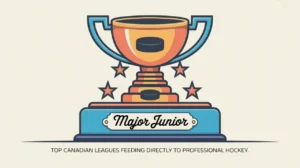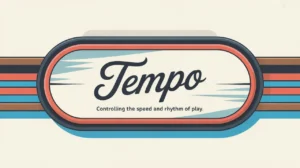Jim’s Intro to Too Many Men
Hi folks, Jim here, the only commentator who thought that too many men was the prequel to the movie A Few Good Men.
What is too many men?
Too many men is a bench minor penalty called when a team has more than the allowed number of players actively participating on the ice. Each side is permitted six skaters including the goalie during even strength. Substitutions must be made on the fly, with players coming off before their replacements engage in the play. If the change is sloppy and two players are participating simultaneously, or someone jumps too early, the team is penalized.
This rule keeps the game fair and prevents teams from sneaking in an extra body to gain an advantage.
How does it work?
Here’s how the too many men penalty typically unfolds:
- Illegal Change or Extra Player: A player comes on before their teammate is within the five-foot change zone or before they’ve left the ice, or a substitute plays the puck too soon.
- Referee Signals: Officials notice the infraction and stop play, raising an arm to call a bench minor penalty.
- Serving the Penalty: Since no single player is at fault, any skater on the ice at the time of the whistle serves the two-minute penalty.
- Power Play for Opponent: The opposing team gets a two-minute man advantage.
- Faceoff: Usually in the offending team’s defensive zone, depending on where the puck was when play stopped.
It’s one of those penalties that frustrates coaches more than players, because it’s almost always preventable.
Common Causes of Too Many Men
- Poor Line Changes: A player jumps on too early before their teammate is close enough to the bench.
- Slow Exits: Players coming off too slowly while their replacements join the play.
- Bad Communication: Confusion over who’s changing leads to two players staying out on the same line.
- Puck Touch During Change: The incoming player plays the puck before the outgoing player is off.
- Goalie Changes: Mismanaged goalie pulls or switches can trigger too many men if timing is off.
How do you make good decisions with it?
Good decisions around line changes depend on timing, communication, and discipline.
- Stick to the Five-Foot Rule: Don’t jump until the player you’re replacing is close enough to the bench.
- Communicate Clearly: Yell or tap to signal who’s changing to avoid doubling up.
- Know the Game Situation: Late in games, changes are riskier because of pressure. Err on the side of caution.
- Coach Smartly: Organized bench management prevents mix-ups during fast changes.
- Avoid Touching the Puck: If you’re just stepping on, keep your stick up and avoid playing the puck until your teammate is off.
How do you master it?
Mastering line changes is about practice and bench discipline. Well-coached teams rehearse change patterns so players know exactly when to jump. They keep shifts organized, benches alert, and avoid panic swaps under pressure. Veterans are especially good at quick, clean changes that keep momentum going without risking a whistle.
What does it look like when done right?
A smooth line change looks like a relay handoff. The exiting player heads to the bench fast, the incoming player times their jump perfectly, and the puck never slows down. The officials barely notice, the opponent can’t exploit the transition, and play flows cleanly. On the flip side, messy changes often leave two players on the ice chasing the same puck, and two minutes in the box to follow.
Commentator’s Corner
Jim’s Take
Too many men is the ultimate “coach’s penalty.” Players hate taking it, benches hate watching it, and fans hate hearing the whistle just as a rush is starting.
Parent Tip
Teach young players the discipline of clean changes early. It’s not glamorous, but it prevents goals against and avoids easy power plays for the other team.
Player Tip
Change hard, change smart, and keep your head on a swivel. If in doubt, wait a second. Giving up possession is better than giving up a power play.
A Final Thought
Too many men is a penalty of timing and attention. Teams that master line changes keep momentum alive. Teams that don’t hand their opponents free chances. Clean changes win games more often than you think.









